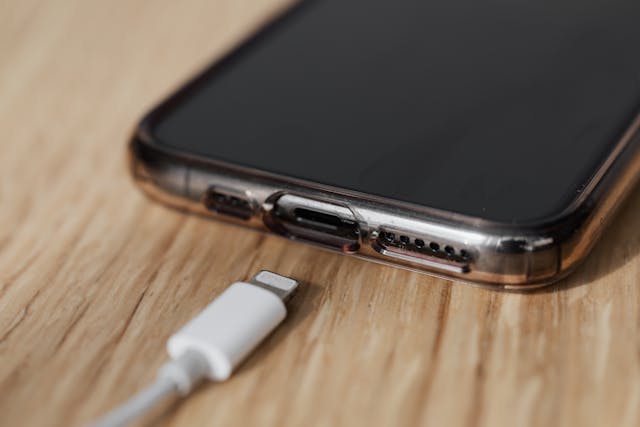Learn how to do an isinwheel S9MAX AC charging port replacement with a simple, relatable, step-by-step guide for beginners.
An isinwheel S9MAX AC charging port replacement involves opening the scooter deck, removing the damaged port, reconnecting a new one, and testing it. Most people can finish the job in under 30 minutes with basic tools. If you’re dealing with electronic payment systems or other technical equipment in your business, understanding how to choose a payment processor for your business can help you make informed decisions about reliable technology solutions.
I didn’t wake up expecting to take apart an electric scooter… and honestly, I had no idea I’d be talking to you about it either. But here we are… both of us staring at an S9MAX that refuses to charge, wondering if the universe is trying to teach us patience or just messing with our plans.
Maybe your scooter suddenly stopped charging. Maybe the charger only works when you twist it at weird angles. Or maybe you saw that spark once and decided, “Nope. I’m not dying like this.”
Whatever brought you here, the good news is this… you can actually replace the AC charging port yourself. Even if you feel like you’re juggling tools with zero experience, this process is surprisingly doable. And I’m figuring it out with you, step by step, as we go.
Let’s take a breath, grab the scooter, and sort this out.
Article Breakdown
Understanding the Charging Port
So before you even grab a screwdriver, let’s understand what you’re about to fix. The S9MAX uses a simple 42V charging port, usually a round 3-pin type. It’s tougher than it looks… until it isn’t. Dirt, pressure, rough plugging, weak internal soldering… it all adds up.
What surprised me is how often the port fails compared to the battery. A lot of people assume the battery is dead, but most of the time, the port is just loose, tired, or downright hanging on for life.
If your charger light dances like a disco, or if you have to hold the cable at a very dramatic angle for it to work, the port is usually the guilty one.
Signs Your Port Actually Needs Replacing
Let’s make sure the port is the real villain before you start opening screws.
Flickering Charger Light
You plug it in and the light acts like it’s confused about its purpose. A flicker usually means loose connection inside the port.
It Only Charges When You Wiggle It
If you’re playing “find the sweet spot” with your charger, the port is likely worn out or bent.
Physical Damage
Cracks around the socket, bent pins, wobbly connector… all signs the port is begging for retirement.
Clicking Sounds or Spark
If you hear anything that sounds like electricity complaining, stop. Replace the port.
Charger Works Fine on Another Scooter
This is the easiest way to confirm the port is the issue.
If you’re nodding at any of these, it’s time to grab a replacement port.
Tools You’ll Need
Don’t panic. Nothing fancy here.
- 3mm and 4mm Allen keys
- Small Phillips screwdriver
- Plastic pry tool
- Replacement 42V AC charging port
- Electrical tape or heat-shrink
- Zip ties (optional)
- Flashlight (because everything important hides in the shadows)
A magnetic dish for screws will save you from crawling on the floor later.
Step-by-Step Replacement Guide
Okay… this is the part where we both take a breath and just go for it.
Step 1: Power Off and Flip the Scooter
Turn it off. Flip it gently on a soft surface. This moment always feels more official than it needs to.
Step 2: Remove the Deck Screws
You’ll find screws all around the deck edges. Remove them one by one. You’ll swear there are more screws than necessary, but that’s normal.
Step 3: Lift the Deck Cover
Use your pry tool and lift slowly. If it resists, don’t yank. It’s just the seal being dramatic.
When it pops open, you’ll see the scooter’s internal wiring staring back at you like, “You really sure about this?”
Step 4: Find the Charging Port Assembly
You’ll spot the port’s wires going into the control box. Sometimes it’s wrapped in insulation or secured with a nut.
This is where the flashlight becomes your best friend.
Step 5: Disconnect the Old Port
You’ll usually see red and black wires. Red is positive. Black is negative.
Unplug them gently. You are not defusing a bomb, but it sometimes feels like it.
Step 6: Remove the Port from the Frame
There’s usually a securing nut. Unscrew it and push the old port outward through the scooter frame.
This part feels like removing a tiny bad tooth.
Step 7: Install the New Port
Slide your new port into place. Make sure it sits nicely and the pins face the right direction.
Reconnect the wires:
- Red to red
- Black to black
Seal the joints with tape or heat-shrink. Give the wires a gentle tug to make sure nothing is loose.
Step 8: Test the Charger
Before closing anything… test. Plug in your charger.
If the light turns red… that’s victory.
If not, double-check the wiring.
Step 9: Close the Deck
If everything works, put the deck cover back and tighten the screws evenly. Flip the scooter upright. Plug it again just to enjoy the moment.
Common Mistakes to Avoid
Replacing the port is easy, but the mistakes can be beautifully creative if you’re not careful.
Crossing the Wires
Red doesn’t go with black. Ever. You don’t want to fry the controller.
Overtightening the Internal Nut
You might crack the frame ring. Tight, not Hulk-tight.
Not Testing Before Closing
You’ll end up reopening everything… and you’ll hate yourself a little.
Buying the Wrong Port
Always get a 42V-rated compatible port.
Other Things to Try Before Replacing
If you’re hesitant about opening the scooter, you can try a few quicker fixes.
Clean the Port
Use compressed air to remove dirt. Dust is a sneaky enemy.
Check the Charger
Sometimes the charger’s tip is bent or loose.
Tighten the Outer Ring
If the port wiggles, tightening the ring can give temporary life.
Check Inner Wire Connections
Loose internal wires can mimic port failure.
Some people swear cleaning fixes everything. Others say it delays the inevitable. You’ll find out soon enough.
Replacement vs Professional Repair
If you’re debating between doing it yourself or paying someone, here’s the honest comparison.
DIY
Pros: cheaper, quicker, surprisingly satisfying Cons: mistakes happen, warranty concerns
Professional
Pros: stress-free, guaranteed results Cons: costs more, takes time, less DIY glory
Comparison
| Feature | DIY Repair | Professional Repair |
|---|---|---|
| Cost | Low | Medium to high |
| Time | 20–30 minutes | 2–5 days |
| Skill | Beginner | None |
| Risk | Moderate | Low |
| Warranty | Might void | Usually safe |
Frequently Asked Questions
How long does it take to replace the port?
Usually around 20 to 30 minutes once you get going.
Can this void my warranty?
Yes, opening the deck can affect warranty coverage depending on your region.
What type of port does the S9MAX use?
It uses a 42V AC/DC aviation-style charging port.
Is replacing the port dangerous?
Not if the scooter is off and you keep the wires matched correctly.
What if it still won’t charge?
Then the issue might be the charger or the controller instead of the port.
Key Takings
- You can replace the isinwheel S9MAX AC charging port with basic tools and patience.
- Most charging issues come from a loose or damaged port, not a dead battery.
- Cleaning or tightening the port might buy you time, but replacement is the long-term fix.
- Matching wire polarity is crucial for avoiding controller damage.
- Testing the port before closing the deck saves frustration.
- DIY repair is cost-effective and surprisingly doable for beginners.
- Professional repair is safer if you don’t want to deal with the internals.
Additional Resources
- Essential Electric Scooter Maintenance Guide for New Riders: A practical guide on keeping electric scooters running longer with minimal issues.
- UL 2271 Certification: Ensuring Safe Lithium Batteries for Light Electric Vehicles: Useful safety guidelines to help prevent overheating and electrical faults.



